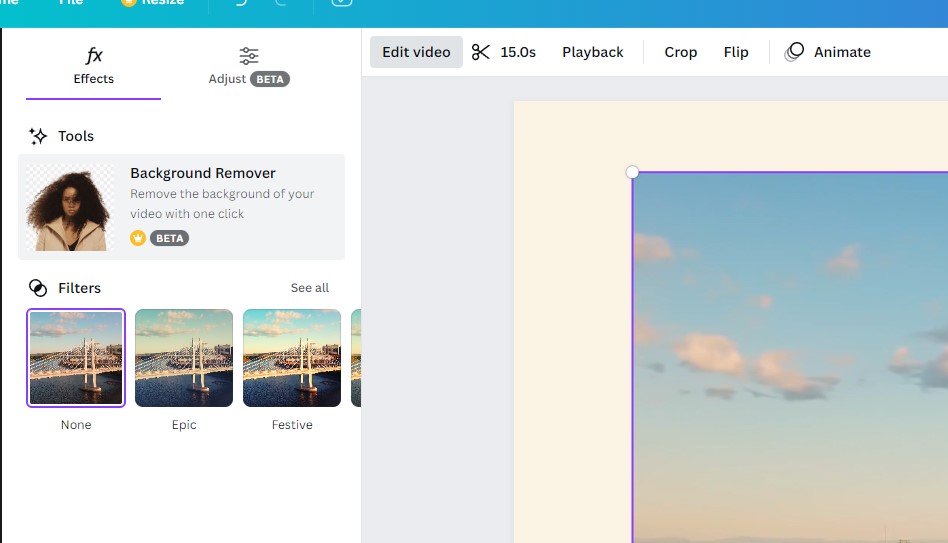
When exporting a file from the Render Queue, After Effects will default to the composition’s background color, where any transparency exists. If you want to view individual channels, you’ll also find a Show Channel button just to the left. To quickly view the transparency in AE, click on the Toggle Transparency button at the bottom of the Composition panel. To change this color, go to Composition > Composition Settings. Instead, you see the background color of the composition. As with the exported files, After Effects by default does not show transparency in the comp panel.
Make transparent video how to#
So how do we properly handle this in AE?įirst, let’s figure out how to view transparency information inside the program. This means your graphics will lack any transparency information in the final file. If you add a sequence to the Render Queue in After Effects, by default it will not include an alpha channel. There’s actually a fourth Alpha channel, but only certain video codecs can include an alpha. Video files are made up of red, green, and blue channels (RGB).

In this video, I reference an Anime Speed Lines tutorial that I produced. Let’s take a look at how to make this happen in AE. With transparency, you can simply drag and drop your graphic files on top of your video tracks.

This is an important aspect of motion graphics because you’re going to want to render out graphic elements to use in video editing applications. If you’re new to Adobe After Effects, you may not know how to include transparency information in your exports. This platform’s native VP8 support does not include transparency support, which means transcoding must be enabled so Unity uses its internal alpha representation.This tutorial shows you how to speed through some After Effects fundamentals, including transparency information.
Make transparent video software#
This means any Editor platform can read videos with transparency with this format.īecause most of Unity’s supported platforms use a software implementation for decoding these files, they don’t need to be transcoded for these platforms. webm file format has a specification refinement that allows it to carry alpha information natively when combined with the VP8 video codec. This codec also usually produces large files, which increases storage and bandwidth requirements. Omitting the transcode operation leaves the ProRes representation in the Asset, meaning the target platform has to support this codec (see documentation on video file compatibility for more information). A Video Clip Asset viewed in the Inspector, showing the Keep Alpha option - highlighted in red - enabledĭuring transcoding, Unity inserts the alpha into the color stream so it can be used both with H.264 or VP8. Your operating system’s video playback software may have the functionality to identify which codecs your video uses. When importing a video that uses this codec, enable both the Transcode and Keep Alpha options by ticking the relevant checkboxes in the Video Clip Importer. It offers the same level of visual fidelity as the source video.Īpple ProRes 4444 is only supported on OSX because this is the only platform where it is available natively.

The Apple ProRes 4444 codec is a high-quality version of Apple ProRes for 4:4:4:4 image sources, including alpha channels. Unity supports two types of sources that have per-pixel alpha: Apple ProRes 4444 Some platforms have limitations for rendering videos with transparency. This per-pixel transparency control is done in applications that produce images and videos (such as NUKE or After Effects), and not in the Unity Editor. However, videos can have per-pixel alpha values, meaning that transparency can vary across the video image. More info See in Glossary’s near or far planes. The output is either drawn to the screen or captured as a texture. The Video Player component supports a global alpha value when playing its content in a Camera A component which creates an image of a particular viewpoint in your scene.

Intermediate values make the image partially transparent, allowing you to see both the image and the background behind it simultaneously. The lowest alpha value means an image is fully transparent (not visible at all), while the highest alpha value means it is fully opaque (the image is solid and cannot be seen through). Alpha is a continuous value, not something that can be switched on or off. In graphics terminology, “alpha” is another way of saying “transparency”. Unity’s Video Clips and Video Player component support alpha, which is the standard term used to refer to transparency.


 0 kommentar(er)
0 kommentar(er)
